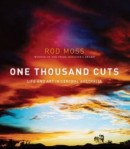It’s about the Melbourne Marathon.
I know, I know, there’s nothing more boring to a non-runner than the idea of someone putting one leg in front of another about 42,000 times. And, yes, I did try to your patience with a little marathon piece a few days ago. Yet this is a nice story…
Last Sunday I ran the Melbourne Marathon. The weather forecast was for a horrible day – wild winds, light rain, thunder, more wind, hail. Hail!
We lined up for the start at 0645 and the weather was overcast, still, mild. Perfect for running. The forecaster lied. An attractive young woman approached me: Hello Howard. Remember me? You used to come to my shop in the city.
I don’t really remember: Yes, of course I remember! But I’ve forgotten your name…
Jeanette. Beaming, dimples in full flight: You helped me have a baby.
What a thought.
Jeanette continues: One day at the shop you asked me if I wanted kids. If I did I should not waste time. Thirty five was better than forty, you said, and twenty five was better still. I was thirty five. I did want children, we were trying, not succeeding. You sent me to the right people. We have a child, one only. IVF failed when we wanted a second. He’s wonderful. He’s Lucca, he’s six now. I work closer to home, Closer to Lucca.
I do remember now. I remember Jeanette serving in her shop, that smile, those dimples flashing above her burgeoning tummy.
We wished each other luck for the marathon and lost each other among the thousands.
The promised rain started at 25 kilometres, the slightest fall, a runners boon, like the quality of mercy ‘that droppeth as the gentle rain from heaven upon the place beneath’. Still no wind. Blessed weather.
By 35 kilometres the quality of mercy had been eclipsed. Heavy rain, rising winds attacked slowing legs, cooling bodies. Brutal conditions for the final, always testing phase of a marathon. If self pity is the sincerest of human emotions, then I was desperately sincere at the 35 km mark.
Running a little ahead of me in St Kilda Road a young couple, both tall, slim, both wearing black, caught my attention. The young man leaned down and across and kissed the woman slowly, a tender kiss, gentle rather than passionate.
I slowed and the two disappeared ahead of me.
One kilometre later I came upon the young blackshirts again. They were walking, the man’s arm around the woman’s shoulders. As I drew alongside I saw she was weeping. Are you hurt?
A shake of her head.
Can I help you? Is it medical?
The man answered: No… Thanks for offering. She’ll be okay.
I jogged on, pondering. The marathon injures your body and your spirit. Tired, deeply deeply tired, cold, unable now to run, perhaps this girl is simply sad.
My own spirit had suffered bruising as I saw my target of four hours disappear, then my fall-back aim of 4.20. Even 4.30 was beyond my moral strength as I allowed the pacemaker lady to glide ahead. One resolution – to finish. Another – not to chase, not to torment myself.
The wind redoubled its force, the rain soaked us, we lifted slow feet in their Nikes, their Asics, their New Balances, which were once lightweight running shoes, now receptacles of water. We moved forward towards a Finish that we could not see.
An hour later? An age unmeasured, the MCG at hand, the Finish somewhere inside and a small lady just ahead of me carried her little flag that identified her as the 4.30 hours pacemaker.
Wise resolutions forgotten, I raised my knees, I swung my arms, I lifted my head, I raced. Through a tunnel, onto the MCG, following the armies in their soaked flags, I raced. Huge breaths sped my new legs. Around a bend, leaning into the curve, chasing my wild legs, I raced. And crossed the line, gasped, managed not to vomit and looked at the digits on the clock that said: four hours, thirty minutes and 18 seconds.
It was a long and shivering walk of four kilometres to my car. Enjoying the sincerest self pity, I was disturbed by a young lady on my right, who exclaimed: Dr Goldenberg! Do you remember me?
The same lie: Yes, of course.
Remember I came to you when I couldn’t get pregnant? You sent me to Dr Raphael and – look in the pusher – there’s Chloe!
Chloe, her round face pink and warm inside her rain spattered shelter, slept peacefully. I thought of my newest granddaughter, Ruby. Same age, same round face.
Yes, I do remember.



